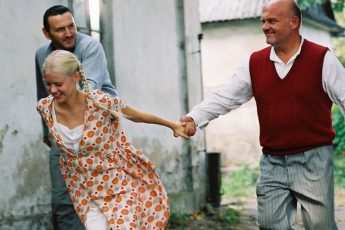The Power of the Moving Image
Harun Farocki’s and Andrei Ujică’s Videograms of a Revolution (1992)
Vol. 37 (January 2014) by Maxence Voiseux
On December 17th 2010, Mohamed Bouazizi, a twenty-six-year-old travelling fruit vendor, lights himself on fire in front of the SDI Bouzid Governorate Head Office. This suicide inspires hate amongst the inhabitants of the Sidi Bouzid province, an impoverished rural region. Like wildfire, this hate spreads to neighboring Kasserine as well as its entire province, before it reaches the Tunisian south and eventually Tunis, the capital. Thus erupts the Tunisian Revolution. It is this single injustice that acts as a trigger for the Arab spring.
Roughly 20 years earlier, on March 17th 1989, six former members of the Romanian Communist Party openly criticize, in a public letter, the economic policy of Nicolae Ceausescu who, at this given point, is close to being reelected president. On December 16th however, a spontaneous protest takes place at Timisoara against the Securitate’s decision to deport László, a Protestant pastor and member of the Hungarian community in Romania. Foreshadowing its Tunisian counterpart, this event triggers the Romanian Revolution as well as Ceausescu’s eventual downfall.
Towards the end of December 1989, while the Romanian people revolt against Ceausescu’s dictatorial regime, hundreds of journalists, camera operators and amateur filmmakers record the events of a revolution that flourishes through its media coverage. Harun Farocki and Andrei Ujica draw from this footage to create Videograms of a Revolution, an editor’s film, which puts the Romanian revolution and all its recorded moving images into perspective.
History is written by sources. Harun Farocki and Andrei Ujica provide food for thought about another kind of historiography, the recording of events through images. The two directors challenge given truths and common beliefs, on both the revolution and historiography, with their voice-over commentary that offers insight on the scenes the audience is bear to witnesses.
In the opening scene of Videograms of a Revolution, a long take reveals two buildings in the middle of a Bucarest suburb. Thousands of sounds overlap each other. Harun Farocki and Andrei Ujica add a voice-over narration in order to place the audience’s attention on the background. Although the shot is overexposed and badly-lit, one may still perceive, though with some difficulty, a great mass of protesters heading towards the central committee. Harun Farocki and Andrei Ujica employ the word “protesters”, and it is only at this very moment that the audience truly comprehends the scene it is viewing.
Using several sources of video, Harun Farocki and Andrei Ujica recompose Ceausescu’s speech in front of the central committee. Similarly to Serge Viallet’s Archive Mysteries, the two directors break down the moving images for a better understanding of the situation they were shot in. Ceausescu’s speech is reconstructed with the official Romanian television archives. Suddenly, the camera starts shaking and the sound of the protesters breaking into the scene contaminates the sound of the dictator’s speech. The TV-broadcast stops. The feed resumes a few seconds later. The camera tilts towards the sky. Harun Farocki and Andrei Ujica, using the amateur video footage shot at the spur of the moment, reveal the authentic scenes that were censored by the Party. By means of a split-screen, they juxtapose the official television footage with that of amateur operators. Using images from a quintessentially historical event, the two filmmakers question the visual perception of reality.
“To suggest is to create, to describe is to destroy”, wrote Robert Doisneau. The danger in the moving image lies in the immediate attention it provokes to the human eye. The footage from the Romanian revolution is of great historical importance. If the audience were solely exposed to the official television archives, it would fall into the trap of a form of cinematographic propaganda and risk being held hostage by its moving images. Harun Farocki and Andrei Ujica deconstruct this artifice by multiplying the different sources of video footage. Videograms of a Revolution is an editor’s film whose authors dissect the events of the Romanian Revolution in order to better understand the power behind the moving image and how one may use moving images to hold onto power.
Transl. by Konstantin Lucas Mikaberidze




Leave a Comment